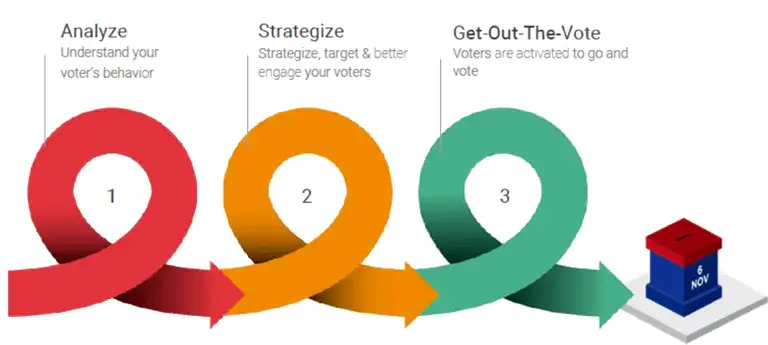The RNC and DNC Could Take Over Your OTTs
BY IQM EDITORS
We know that’s a lot of acronyms. In real life (IRL) this means political advertising will impact your binge-watching addiction in the near future.
National and regional politics are dominating pop culture in 2018. Even the most disenfranchised groups seem to be much more politically active this midterm election cycle.
For example, the confirmation hearing of Judge Brett Kavanaugh featuring testimony from Dr. Christine Blasey Ford drew a combined 20.4 million viewers across NBC, ABC, CBS, Fox News, CNN, and MSNBC according to Nielsen data, as reported by Variety.
Has the general public finally had an awakening to the importance of voting? Or perhaps the outrageousness of national politics can’t be ignored. Whichever the case, politicians, campaigns and marketers are anxious to find more creative ways to deliver messages and content directly to targeted voter groups. The challenge remains ‘how to do it most effectively without blowing up your marketing budget.’
The solution may be over-the-top (OTT) video platforms, such as popular streaming media services, Netflix, Hulu, YouTube TV, and Apple TV.

State of the OTT Marketers
OTT content has been available to consumers and voters for approximately ten years. In that decade, streaming has evolved from a niche business into the media mainstream. Look no further than a recent report published by eMarketer that predicted there will be more than 200 million OTT users in the US by 2019. With that rate of growth in the OTT audience, there has also been a corresponding growth in innovation in OTT advertising.
X Marks the Spot
OTT takes media consumption steps further by allowing advertisers to more precisely target and re-target their most desired audiences. In May 2018, ESPN announced a new feature in its ESPN+ streaming service that will allow advertisers who buy OTT inventory to re-target viewers as they move across the platform’s other digital properties. This functionality could be mirrored by the industry at large. For example, political content distributed on CBSN (CBS’ streaming news service) could be distributed across the remainder of the Tiffany Network’s digital ecosystem, including CBSSports.com, and CBS All Access.
It's Getting More Data-Driven
OTTs provide marketers with an enhanced ability to refine their alternative data capabilities. Rather than solely focusing on the content that consumers/voters consume, OTT content creates additional data points for more sophisticated profiles of viewers, culled from internal databases and third-party sources. comScore, for example, offers an OTT intelligence product and IQM’s own managed and demand-side platforms can be used to distribute ads specifically over OTTs, in addition to tracking and measuring their performance.
Re-Shaping the Ad Experience
Astute campaigns are taking advantage of how much video content is consumed online. From as simple as President Obama’s creation of a YouTube page for his 2008 campaign to bringing in A-list directors to create mini-movies, political ads are a growth industry. Former HP CEO Carly Fiorina made one of the most impactful videos of the 2016 primary season with an ad attacking Republican nominee Donald Trump, who mocked her appearance to a reporter from Rolling Stone.

Carly Fiorina “Faces” Campaign Ad (2016)
Some subscription-based OTTs don’t have video advertising capabilities (at least not yet). But even if Netflix doesn’t offer ads, the viewing experience is having a profound impact on the creative choices made by publishers and advertisers.
Free ad-supported video platforms could fill in the technology gap left by Netflix and others and are beginning to find their way to viewers on internet-connected TVs. There are services like the Roku Channel, Pluto and, Xumo that offer similar audience analytics capabilities of their subscription-based counterparts and provide publishers ad-revenue sharing.
Could Deliver the Youth Vote
Campaigns generally struggle to reach younger voters and one of the main reasons why is because younger Americans don’t consume media where politics thrive, such as broadcast and cable news, newspapers, and snail mail.
Millennials are mobile and live their lives online. Even the preferred lifestyle programming is more likely on an app than on a television network. The median OTT viewer is 23 years younger than traditional TV viewers, and OTT streaming households tend to make $10,000 more per year than traditional TV households.
Because OTT viewers spend more time watching programs, the odds are high that they’re seeing plenty of pre-roll video ads. It’s time for campaigns to mature fully into the digital age and develop video ad capabilities that cater to their audiences’ viewing habits. There exists a need for more targeted, more data-driven, and more creative advertising experiences. It’s pushing the entire marketing industry forward as a result, creating better experiences for advertisers, publishers and hopefully voters.








